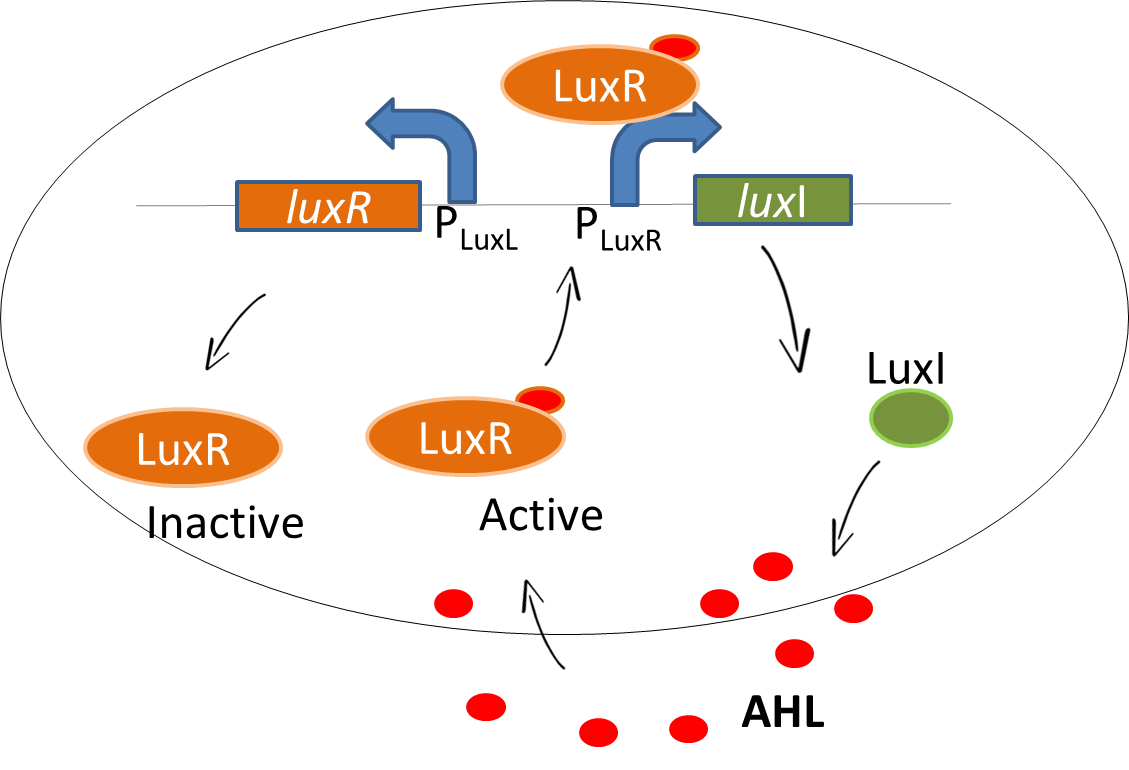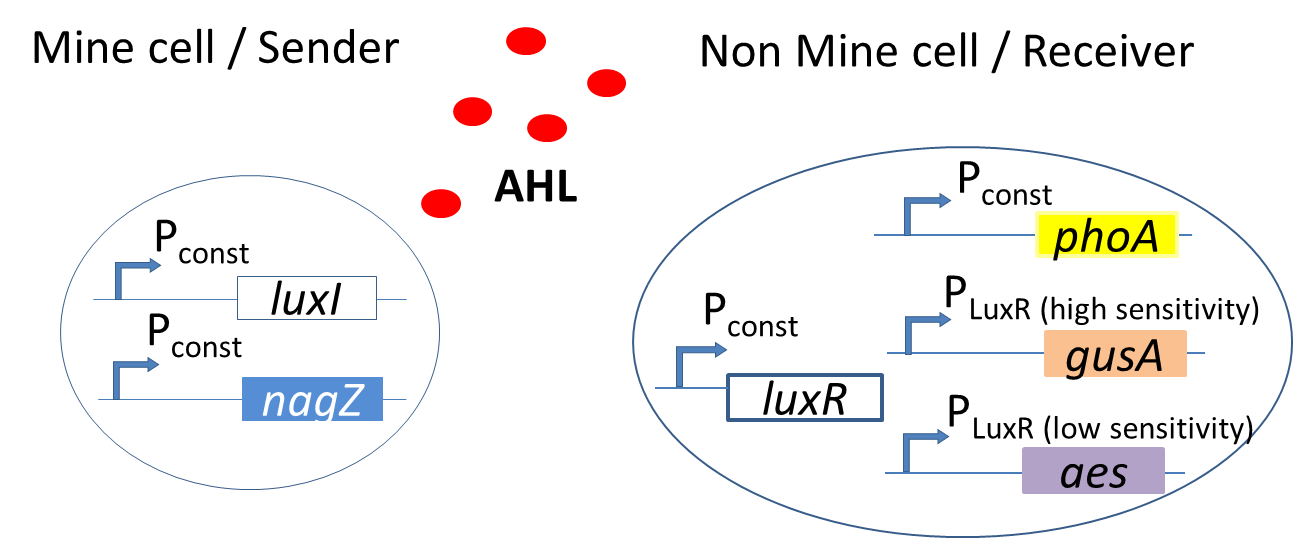Team:ETH Zurich/pre proc
From 2013.igem.org
| Line 19: | Line 19: | ||
<p align="justify">In the bio-game, the mines are the sender cells and the non-mines are the receiver cells. The mines constitutively express LuxI under [http://parts.igem.org/Part:BBa_J23110 promoter (Part BBa_J23110)] and hence [https://2013.igem.org/Team:ETH_Zurich/Experiments_2 AHL]. This molecule then diffuses through the agar and can be processed by the non-mines. | <p align="justify">In the bio-game, the mines are the sender cells and the non-mines are the receiver cells. The mines constitutively express LuxI under [http://parts.igem.org/Part:BBa_J23110 promoter (Part BBa_J23110)] and hence [https://2013.igem.org/Team:ETH_Zurich/Experiments_2 AHL]. This molecule then diffuses through the agar and can be processed by the non-mines. | ||
| - | The non-mines produce luxR under [http://parts.igem.org/Part:BBa_J09855 promoter (Part BBa_J09855] and so the incoming AHL will bind to the luxR protein to form an active complex AHL-luxR. The non-mines also contain [https://2013.igem.org/Team:ETH_Zurich/Processing_2 P<sub>luxR</sub>] that are tuned to different AHL sensitivities. The AHL-luxR complex will bind to the promoters and drive the expression of the reporter [https://2013.igem.org/Team:ETH_Zurich/Experiments_7 hydrolases.] | + | The non-mines produce luxR under [http://parts.igem.org/Part:BBa_J09855 promoter (Part BBa_J09855)] and so the incoming AHL will bind to the luxR protein to form an active complex AHL-luxR. The non-mines also contain [https://2013.igem.org/Team:ETH_Zurich/Processing_2 P<sub>luxR</sub> promoters] that are tuned to different AHL sensitivities. The AHL-luxR complex will bind to the promoters and drive the expression of the reporter [https://2013.igem.org/Team:ETH_Zurich/Experiments_7 hydrolases.] |
Depending on the amount of AHL that is processed, different expression of output colors give the player the cue for the next move in the bio-game. </p> | Depending on the amount of AHL that is processed, different expression of output colors give the player the cue for the next move in the bio-game. </p> | ||
| - | + | In order to study the communcation between the mines and non-mines via the signalling molecule AHL. diffusion tests were performed which can be viewed [https://2013.igem.org/Team:ETH_Zurich/Experiments_2 here] | |
Revision as of 08:55, 27 October 2013
LuxR signaling system
Natural Lux signalling system
As our system is based on a sender-receiver module, we use the lux signalling system in our bio-game. In Vibriofischeri, the lux gene encodes for the enzyme that catalyses the production of the signalling molecule N-acyl-homoserine lactone, AHL. The AHl molecule is able to diffuse in and out of cells. This molecule then binds to the inactive luxR protein. Binding of AHL to the luxR forms an active AHL-luxR complex. This complex then binds to the Plux promoter and drives the gene expression forward.
Exploiting the lux signalling system in Colisweeper
In the bio-game, the mines are the sender cells and the non-mines are the receiver cells. The mines constitutively express LuxI under [http://parts.igem.org/Part:BBa_J23110 promoter (Part BBa_J23110)] and hence AHL. This molecule then diffuses through the agar and can be processed by the non-mines. The non-mines produce luxR under [http://parts.igem.org/Part:BBa_J09855 promoter (Part BBa_J09855)] and so the incoming AHL will bind to the luxR protein to form an active complex AHL-luxR. The non-mines also contain PluxR promoters that are tuned to different AHL sensitivities. The AHL-luxR complex will bind to the promoters and drive the expression of the reporter hydrolases. Depending on the amount of AHL that is processed, different expression of output colors give the player the cue for the next move in the bio-game.
In order to study the communcation between the mines and non-mines via the signalling molecule AHL. diffusion tests were performed which can be viewed here
 "
"







